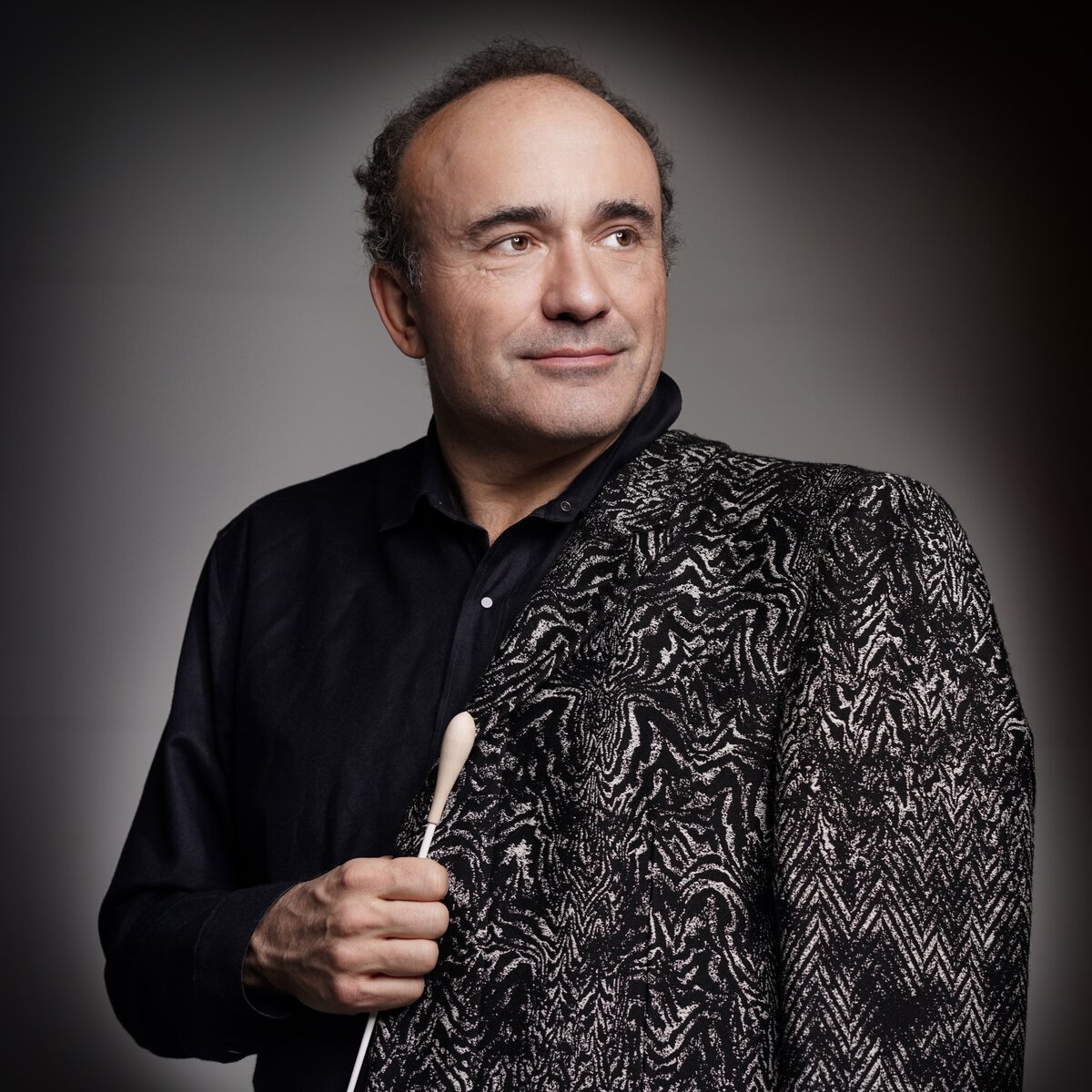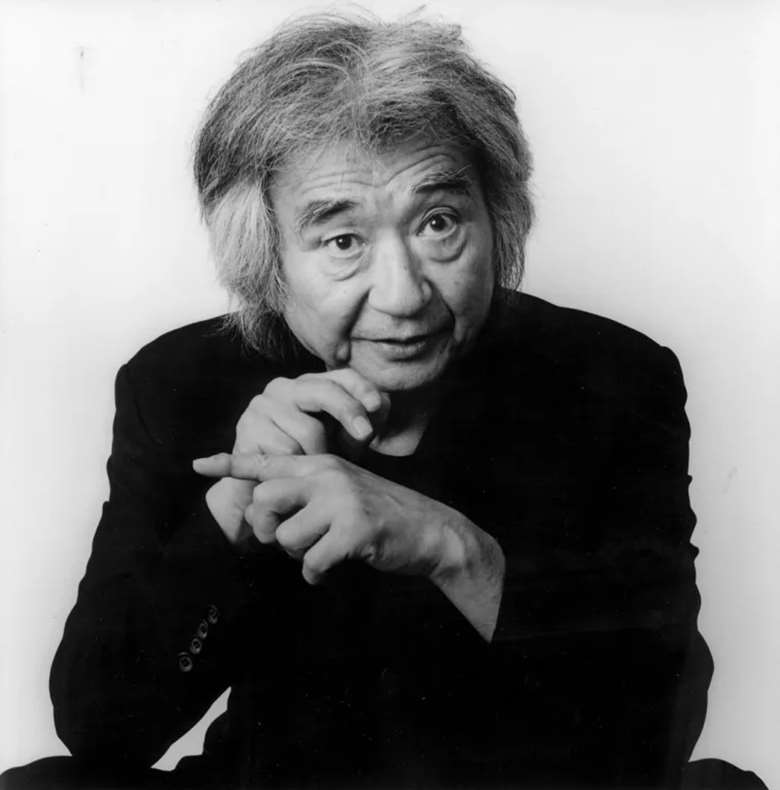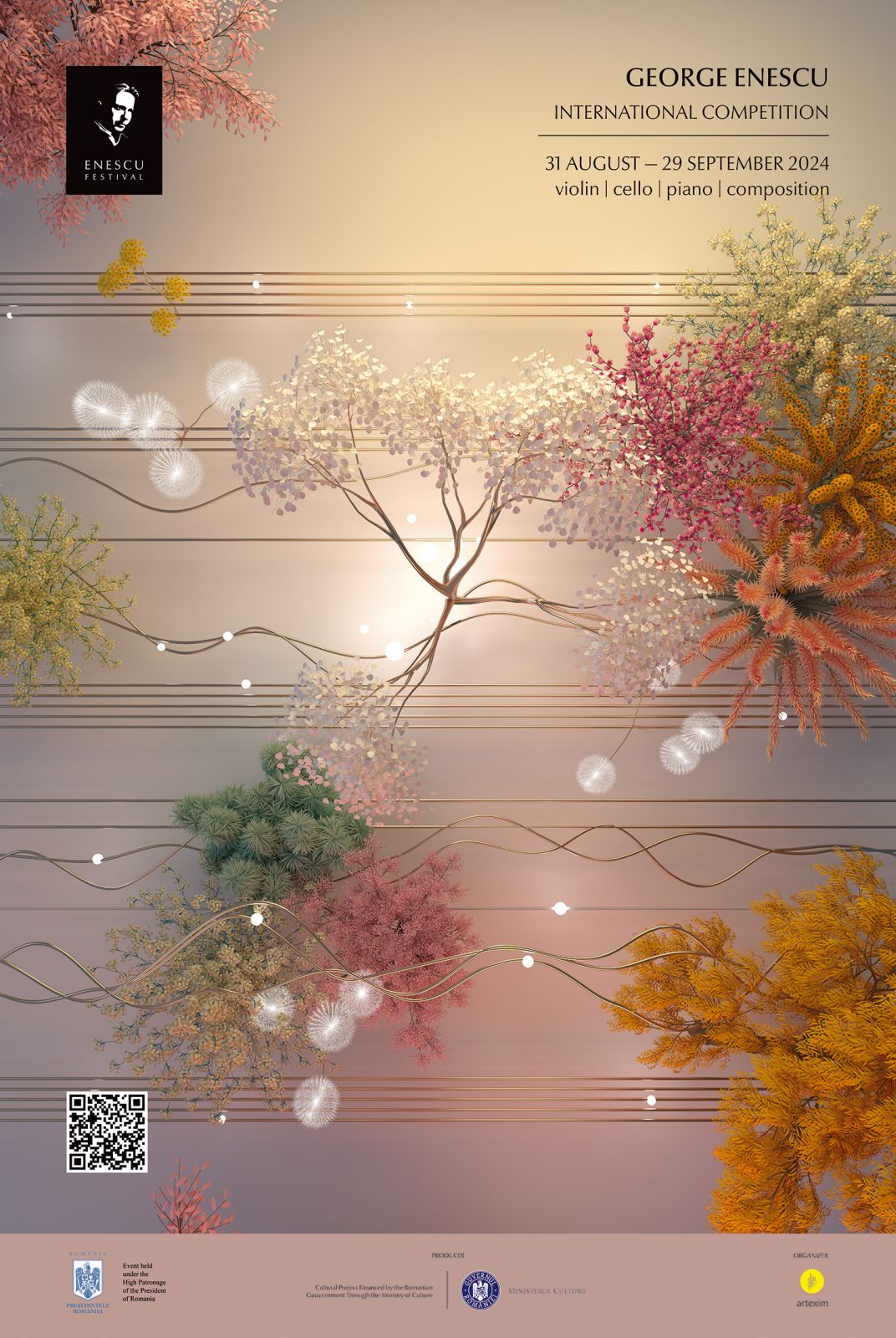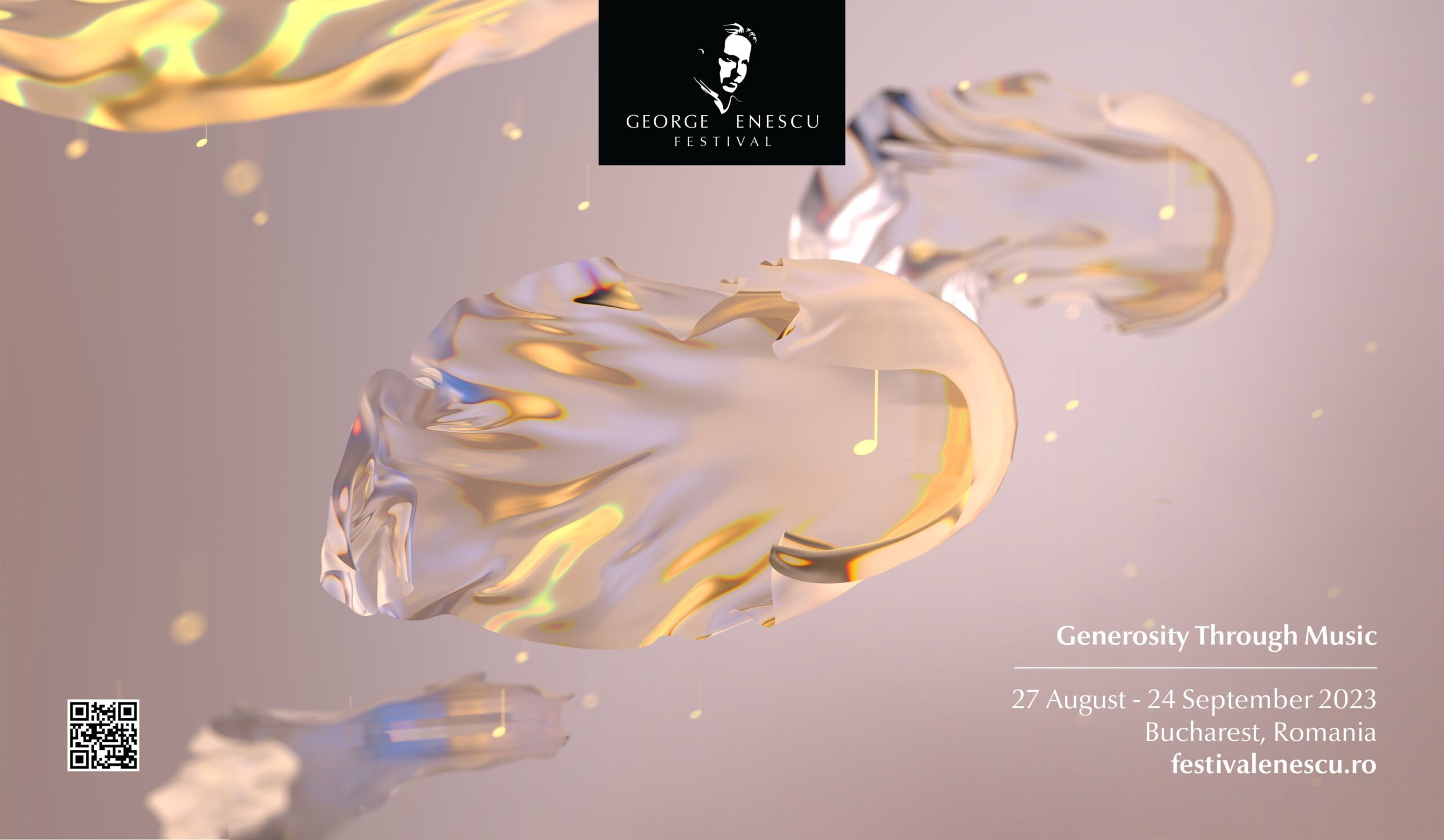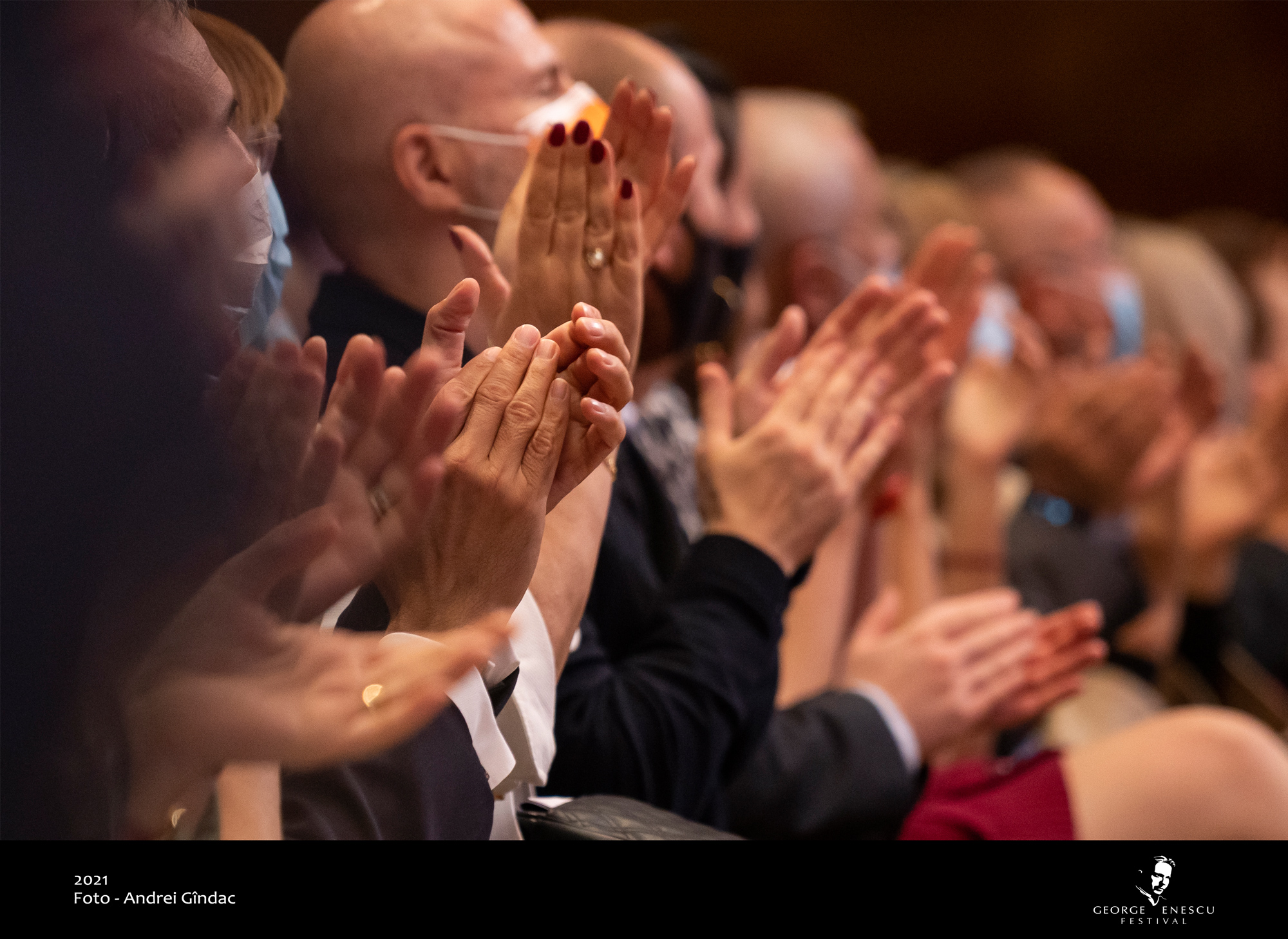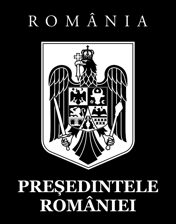Romanian premiere of the famous opera Die tote Stadt (‘The Dead City’) takes place today at the Enescu Festival
Celebrated vocal soloists Céline Scheen and Philippe Jaroussky sing sacred works at the Athenaeum
The famous opera Die tote Stadt (‘The Dead City’) by Erich Wolfgang Korngold, an Austrian composer considered – like Mozart – a child prodigy, is presented tonight for the first time in Romania, on the Enescu Festival stage, performed by the George Enescu Philharmonic Orchestra and the George Enescu Philharmonic Choir, under the baton of Frédéric Chaslin and choir conductor Iosif Ion Prunner. The performance will be in the multimedia format, with the participation of directors Nona Ciobanu and Peter Kosir, and will feature an international cast of soloists.
The three-act opera was composed in 1919 to a libretto by Paul Schott, the pseudonym of the composer’s father, eminent music critic Julius Korngold, in collaboration with the composer himself. The action is based on texts by Georges Rodenbach and the premiere took place in 1920, when the composer was 23 years old. Korngold excelled in composition from an early age and is often compared to the talent of child-genius Mozart.
“At the age of just ten, Korngold, an astonishing musical prodigy, composed a cantata entitled Der Tod, and this was later to form the opening movement for a set of complex piano miniatures on the story of Don Quixote by Cervantes, which he completed at the age of 11. The blueprint for Korngold’s opera Die tote Stadt can be found in this very early work – bold, declamatory opening phrases, a free use of densely chromatic harmony and a predilection for the delayed resolution of dissonance – it is all there in the music of a ten year old boy. His love of suspension between the inner voices of complex chordal progressions and a gift for writing memorable, unusual melody is also present, a gift that would make Die tote Stadt one of the most fascinating works of its time,” writes musicologist Brendan G Carroll, author of Korngold’s definitive biography, in an article for https://www.festivalenescu.ro/en/the-genesis-of-erich-wolfgang-korngolds-opera-die-tote-stadt/.
The opera has enjoyed great success since its premiere in December 1920. Die tote Stadt was one of the most performed works of the 1920s, but with the takeover of the Nazi regime it was banned on account of the composer’s Jewish origins, along with his entire oeuvre. The work regained its success after 1975 and was performed on famous stages around the world.
“The orchestra is vast: three of each woodwind, four horns, three trumpets, the rarely used bass trumpet, three trombones, tuba, timpani, and five percussion (plus five more percussion on stage at the end of Act 1) two harps, four keyboard players – piano, celeste, organ and, supplying a special, eerie colour for the ghost of the dead wife, Marie, a harmonium! In addition there are church bells, a mandolin, a wind machine, a stage band of two trumpets and two Eb clarinets, a large chorus, a children’s chorus, a chamber choir of 16 voices and a further 8 sopranos off stage during Act 2. (…)The principal roles are equally demanding, and for the tenor who sings the role of Paul, this is especially true. Apart from the opening scene and a brief pause in Act 2, he is on stage throughout with high notes on almost every page,” musicologist Brendan G Carroll adds in his article.
At the Romanian Athenaeum, from 4:30 PM, the Early music ensemble L’Arpeggiata will perform a program composed of sacred works, arias from famous oratorios. The program begins with arias from oratorios by Antonio Caldara, an Italian composer of the Baroque period. It is completed by Piacere’s aria Lascia la spina from Haendel’s oratorio Il Trionfo del Tempo e del Disinganno. This was the first oratorio of Haendel’s creation, written in 1707 to a libretto by Cardinal Benedetto Pamphili and structured in 2 parts. Concluding the program will be the Stabat Mater oratorio by Giovanni Battista Pergolesi. The large work composed in 1736 is structured in 12 parts in the key of F minor; we still have Jean-Jacques Rousseau’s description of the beauty of the first duet – “the most moving and perfect duet.” The soloists who will take the stage are Céline Scheen and Philippe Jaroussky.
DAILY AGENDA
CONCERTS
SERIES: CONCERTS AND RECITALS
TIME: 4:30 PM
PRESS ARRIVAL: 4:00 PM
VENUE: ROMANIAN ATHENAEUM
ENSEMBLE L’ARPEGGIATA
CHRISTINA PLUHAR theorbo & musical direction
PHILIPPE JAROUSSKY countertenor
CÉLINE SCHEEN soprano
JUDITH STEENBRINK baroque violin
CATHERINE AGLIBUT baroque violin
FILIP REKIEĆ baroque violin
LATHIKA VITHANAGE baroque violin
ANIA NOWAK baroque viola
RODNEY PRADA viola da gamba
BRUNO COCSET baroque cello
LEONARDO TERRUGGI double bass
JOSEP MARIA MARTI DURAN theorbo & baroque guitar
DANI ESPASA positive organ
Program:
Stabat mater – Caldara & Pergolesi
Antonio Caldara Introduzione from La Passione di Gesu Cristo Signor Nostro
Antonio Caldara Per il Mar del Pianto Mio – Aria di Maddalena from Maddalena ai piedi di Cristo (Céline Scheen)
Antonio Caldara Só, lieti festeggiate – Aria di Amor Celeste from Maddalena ai piedi di Cristo (Philippe Jaroussky)
Antonio Caldara Pompe inutile – Aria di Maddalena con violoncello solo from Maddalena ai piedi di Cristo (Céline Scheen)
Antonio Caldara Quel buon pastor son io from La morte di Abel (Philippe Jaroussky)
Antonio Caldara In lagrime stemprato il cor qui cade – Aria di Maddalena from Maddalena ai piedi di Cristo (Céline Scheen)
Georg Friedrich Haendel Lascia la spina – Aria di Piacere from Il Trionfo del Tempo e del Disinganno (Philippe Jaroussky)
Giovanni Battista Pergolesi Stabat Mater
I. Stabat Mater
II. Cujus Animam
III. O quam tristis
IV. Quae moerebat
V. Quis est homo
VI. Vidit suum
VII. Eia Mater
VIII. Fac ut ardeat
IX. Sancta Mater
X. Fac ut portem
XI. Inflamatus
X. Inflamatus
XII. Quando corpus – Amen
(Céline Scheen, Philippe Jaroussky)
Founded in 2000, L’Arpeggiata is an ensemble directed by Christina Pluhar. Its members are today’s finest instrumentalists specialized in Early music, in collaboration with exceptional singers. L’Arpeggiata also likes to bring together artists from various musical backgrounds around programs and projects skillfully conceived by Christina Pluhar based on her musicological research, encounters, the curiosity that drives her, and her immeasurable talent. L’Arpeggiata regularly collaborates with outstanding soloists performing art music from the Baroque period (Philippe Jaroussky, Valer Sabadus, Céline Scheen, Véronique Gens, Stéphanie d’Oustrac, Rolando Villazon) and traditional music (Vincenzo Capezzuto, Ensemble Barbara Furtuna) and other genres of music, such as jazz or flamenco (Gianluigi Trovesi, Pepe Habichuela, Wolfgang Muthspiel). L’Arpeggiata was given residency at Carnegie Hall in New York, and also at the Theatre of Poissy, Wigmore Hall in London, and the Teatro Mayor in Bogotà, Colombia, to perform the opera in five acts Orfeo Chaman, directed by Rolf and Heidi Abderhalden.
SERIES: GREAT ORCHESTRAS OF THE WORLD
TIME: 7:30 PM
PRESS ARRIVAL: 7:00 PM
VENUE: GRAND PALACE HALL
GEORGE ENESCU PHILHARMONIC ORCHESTRA
GEORGE ENESCU PHILHARMONIC CHOIR
FRÉDÉRIC CHASLIN conductor
IOSIF ION PRUNNER conductor of the choir
NONA CIOBANU, PETER KOSIR multimedia directors
Program:
Korngold Die tote Stadt (concert version)
ROLF ROMEI Paul (tenor)
CRISTINA PASAROIU Marietta (soprano)
MARKUS WERBA Frank (baritone)
KISMARA PEZZATI Brigitta (contralto)
DIANA TUGUI Juliette (soprano)
STEPHANIE HOUTZEEL Lucienne (mezzo-soprano)
MICHAEL GNIFFKE Victorin (tenor)
FLORIN ESTEFAN Fritz (baritone)
ILYA SELIVANOV Count Albert (tenor)
Frédéric Chaslin is a French conductor, composer and pianist. He recently joined the prestigious Music publishing house Universal Edition in Vienna. Chaslin studied at the Conservatoire de Paris, where he won first prizes in harmony, counterpoint, fugue, piano accompaniment, vocal direction, and orchestration. He later studied at the Mozarteum University of Salzburg. In 1989, Chaslin became assistant conductor to Daniel Barenboim at the Orchestre de Paris and at the Bayreuth Festival. In 1991, he held a similar post with Pierre Boulez at the Ensemble Intercontemporain from 1989 to 1991. Boulez gave him his first concerts at an international level in Rome (July 1991) and at the Festival Wien Modern (October 1991). Chaslin’s compositions include the Chagall Suite for orchestra, Diva Dance for the film The Fifth Element, songs and lieder, and several operas, including adaptations of Wuthering Heights. He has also written a book on music, La Musique dans Tous les Sens (provisional English title, Music in Every Sense), published in 2009. Chaslin has written an opera commissioned by Placido Domingo, the “Monte Cristo.”
SERIES: ENESCU IN OTHER CITIES
TIME: 7:00 PM
PRESS ARRIVAL: 6:30 PM
VENUE: MOLDOVA PHILHARMONIC IASI
MOLDOVA STATE PHILHARMONIC ORCHESTRA OF IASI
ADRIAN PETRESCU conductor
CRISTIAN NICULESCU piano
PATRICIA KOPATCHINSKAJA violin
GRIG BURLOIU live electronics
Martin Torp Concerto for Piano and Orchestra
Fred Popovici Concerto for Violin, Live electronics, and Orchestra
Gabriel Iranyi Passages for Orchestra
Peter Ruzicka Furioso for Orchestra
A musician with an impressive national and international artistic career, Adrian Petrescu is first oboist of the George Enescu Philharmonic in Bucharest, guest conductor of symphony orchestras in Romania and abroad. He is also the founder and conductor of the chamber brass band Romanian Brass. He is a constant presence as conductor and soloist at the prestigious George Enescu International Festival in Bucharest, with a repertoire that is being enriched constantly and includes reference works from the Pre-Classical to 21st century music.
Following studies at the Academy of Music in Bucharest with Sandu Sandrin and Cristina Georgescu and at the Hochschule der Künste Berlin with Hans Leygraf, Cristian Niculescu graduated from several master classes with Dimitri Bashkirov at the Mozarteum Academy in Salzburg and at the Reina Sofia Academy in Madrid. He made his debut with the National Radio Orchestra in Bucharest (1986) and at the Romanian Athenaeum in 1988. He has performed as a soloist with the George Enescu Philharmonic Orchestra, the National and Chamber Orchestras of the Romanian Radio Broadcaster in Bucharest, Moldova Philharmonic in Iasi, Transylvania Philharmonic in Cluj, Banatul Philharmonic in Timisoara, and various other orchestras across Romania. Abroad he is invited to collaborate both as a concert pianist and in chamber music recitals.
A combination of depth, brilliance and humor, Kopatchinskaja brings an inimitable sense of theatrics to her music. Whether performing a violin concerto by Tchaikovsky, Ligeti, or Schoenberg or presenting an original staged project deconstructing Beethoven, Ustwolskaja, or Cage, her distinctive approach always conveys the core of the work. In a Times piece Rebecca Franks noted, “Kopatchinskaja was like a cat teasing a butterfly, always ready to pounce on a passing phrase, whether answering the first violins or duetting with a perky clarinet. It has become her calling card to make the familiar unfamiliar.”
TIME: 7:00 PM
PRESS ARRIVAL: 6:30 PM
VENUE: AUDITORIUM MAXIMUM HALL CLUJ-NAPOCA
MANUEL FISCHER-DIESKAU cello
CYPRIEN KATSARIS piano
Program:
Schumann Adagio and Allegro Op. 70
Enescu Trois mélodies, arr. for cello and piano (Le désert, Le galop, Soupir)
Enescu Allegro in F minor for Cello and Piano
Brahms Cello Sonata No. 2 in F major Op. 99
“Manuel Fischer-Dieskau offers suavely toned shaping of the melodies that is both intelligent and expressive.” (The Strad magazine). “Like his father at his best, Manuel Fischer-Dieskau knows how to intervene in a way that brings the music to life, he extracts the maximum range of expression from the scores.” (MusicWebInternational) If one wanted to describe the cello playing of Manuel Fischer-Dieskau with only one sentence, this could be: Let the cello sing and tell stories! After his studies with Wolfgang Boettcher (Berlin), Janos Starker (Bloomington/Indiana University, USA), William Pleeth (London) und Arto Noras (Helsinki), he started an international career as member of the Cherubini String Quartett, performing on all important concert stages all over the world.
Cyprien Katsaris, the French-Cypriot pianist and composer, was born in Marseilles in 1951. He first began to play the piano in Cameroon where he spent his childhood, at the age of four, with Marie-Gabrielle Louwerse. A graduate of the Paris Conservatoire where he studied piano with Aline van Barentzen, Monique de la Bruchollerie, and chamber music with René Leroy and Jean Hubeau, he won the International Young Interpreters Rostrum-UNESCO (Bratislava 1977), the First Prize in the International Cziffra Competition (Versailles 1974), and he was the only western-European prizewinner at the 1972 Queen Elisabeth of Belgium International Competition.
CREATIVE BUCHAREST
- Exhibition of photographs and unpublished documents about George Enescu and the Enescu Festival titled “Enescu. Genius and Festival. Face(t)s of Love” from September 1 to 26, 2021, at the Athenaeum and the Palace Hall. The exhibition is a joint project of the Enescu Festival, together with its official photographers Andrada Pavel, Catalina Filip, Andrei Gandac, and Alex Damian, the Diplomatic Archives of the Ministry of Foreign Affairs, and the Enescu Museum.
- 7-episode film dedicated to the 2021 George Enescu International Festival, broadcast by TVR.
- 7-installment film titled Constantin Silvestri – Avant-gardist, master improviser, homme passionné, a 2021 UK production by Anda Anastasescu and Nicolas Gaster; installments: Prelude, Lead Soldiers, The Little Shepherd, Fireworks, Pictures at an Exhibition, Nocturne; program: Saturday, August 28 – Sunday, September 26, 2021.
FURTHER INFORMATION
PROGRAM, ARTISTS, NEWS: https://www.festivalenescu.ro/en/
DAILY AGENDA with interview, reviews, and additional information: https://bit.ly/3jneKsC
PRESS ACCESS: Concert access of accredited members of the press will be according to the accreditation forms. Accreditation is not required for any other events.
TVR VIDEOGRAPHY: Televisions may broadcast video excerpts from the link below, always citing the source (TVR), during their newsreels. It is not allowed to upload the excerpts to Facebook.
- ftp://newftp.tvr.ro/; username: enescu.tvr; password: b@sBx4Ui (please use FileZilla to open the files)
PHOTOGRAPHY AND VIDEOGRAPHY: All media may use photo and video images provided by the Enescu Festival via the following link: https://bit.ly/3DoPoCI. Kindly keep the credits visible for all photos.
